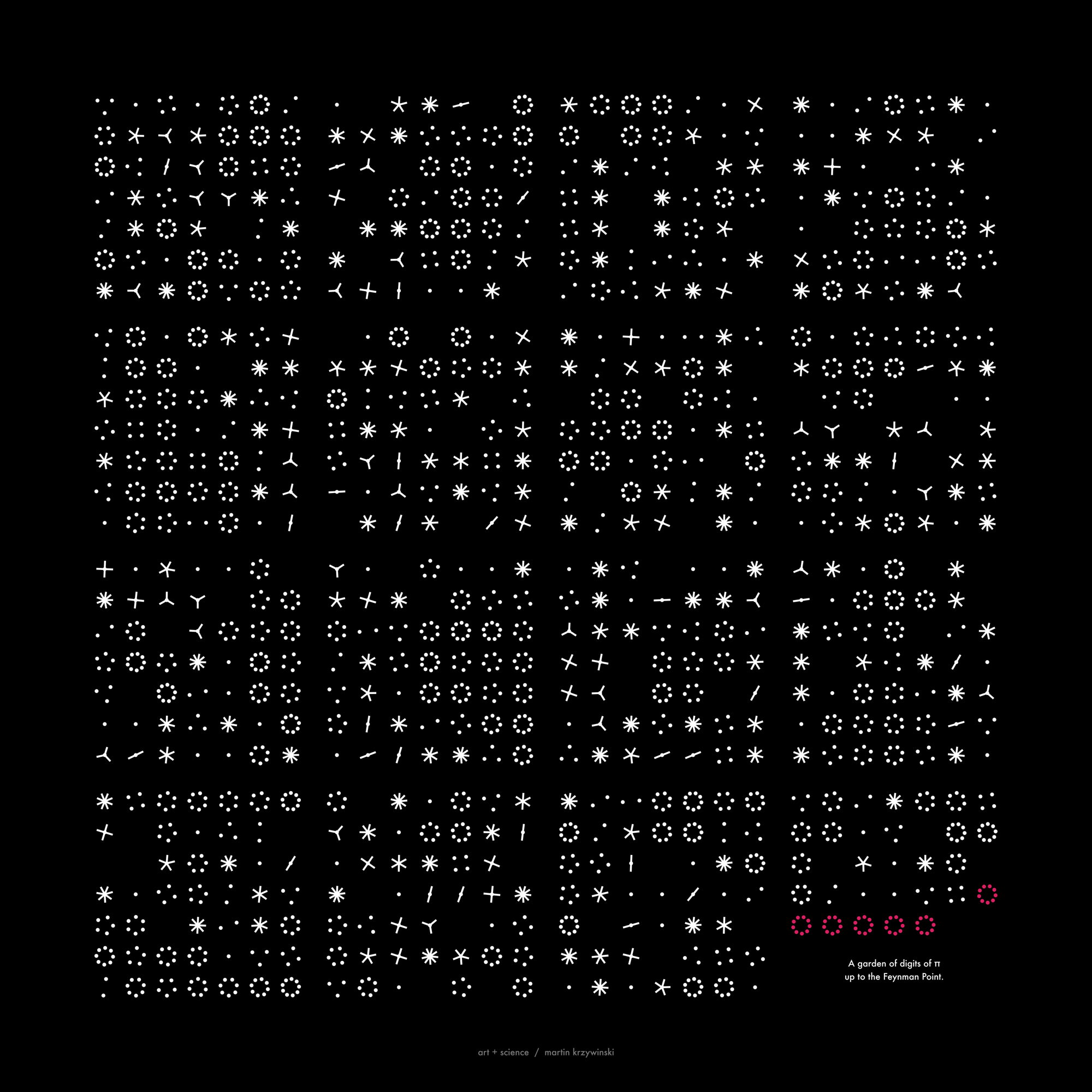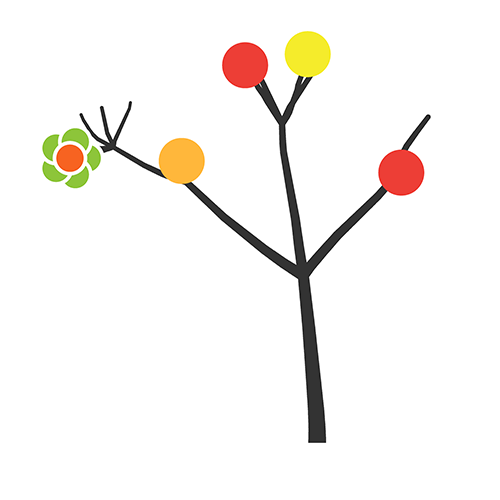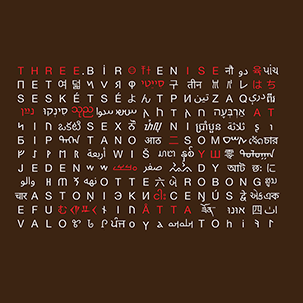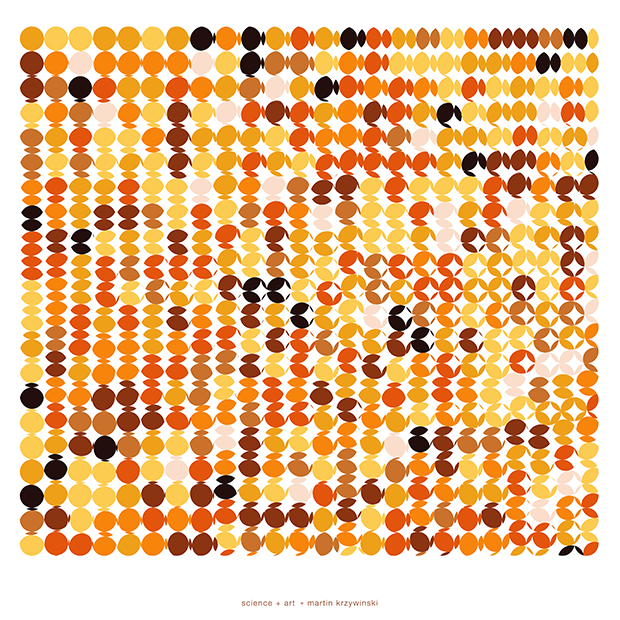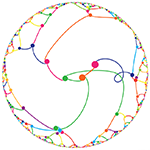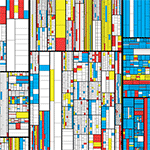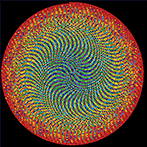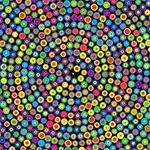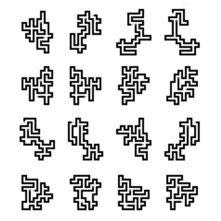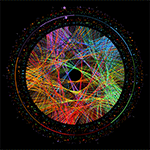The art of Pi (`\pi`), Phi (`\phi`) and `e`
Like music with numbers? Here's a short list of some of my favourite songs that have numbers in their lyrics. Absolutely none of them is about bottles of beer.
music with numbers
1 — One Hundred Billion Sparks, Max Cooper | Imagine a neuron firing. Now imagine 100,000,000,000 neurons firing. This is the music for it.
2 — Numbers, Smoke City | This song is entirely composed of references to different numbers. The bonus? It's both in English and Portuguese. I love the way it ends—"Isn't it beautiful out here?".
Un
Un
Four
Five
Fifteen
Quinze
Seventeen
Seven
...
Tres
forty nine
Isn't it beautiful out here?
Isn't it beautiful out here?
Isn't it beautiful out here?
3 — 99 luftbaloons, Nena | The numerical classic.
Hast du etwas Zeit für mich
Dann singe ich ein Lied für dich
Von 99 Luftballons
4 — One, Aimee Mann | Beautiful mathematics of relationships using small numbers.
One is the lonliest number that you'll ever do. Two can be as bad as one, it's the lonliest number since the number one.
5 — Angels at My Door, Una | Long sequences of numbers.
58, 56, 54 angels at my door.
63, 62, 61, 60, 59, 58 angels at my gate.
6 — Tricky, Tricky, Royksopp | Number words about the fearful six from Norway.
Six afraid of seven 'cause seven, eight, nine
I'm about to lose it the second time
7 — Pt vs Ys, Yoshinori Sunahara | The first four numbers, in German, are this song's lyrics.
Eins, zwei, drei, vier.
8 — Der Kommissar, Falco | Unlike the previous song, this one starts with a German count (doesn't get to vier, though) and just gets better from there.
Two, three, four
Eins, zwei, drei
Na, es is nix dabei
Na, wenn ich euch erzähl' die G'schicht'
9 — 2wicky, Hooverphonic | The numbers likely reference the Prophet-600 and SH-101 synthesizers.
Prophet 60091.
Before we start you should know that you're not the only one who can hurt me.
SH10151.
This is the serial number of our orbital gun.
SH10151.
You better be sure before you leave me for another one.
10 — Straight to Number One, Touch and Go | Something to listen to after midnight.
Fingers, four, play, three, to number one.
11 — The Beat Experience, Pepe Deluxe | I am reminded of this song at too many academic seminars.
Here we are now, at the middle, of the fourth large part of this talk.
More and more I have the feeling that we are getting nowhere.
Slowly, as the talk goes on, we are getting nowhere.
And that is a pleasure.
It is not irritating where one is.
It is only irritating to think one would like to be somewhere else.
Here we are now, a little bit after the middle, of the fourth large part of this talk.
12 — Thousand Kisses Deep, Leonard Cohen | A list of songs that doesn't include one by Cohen is not worth reading. The sentiment of a thousand kisses is as old as lips existed. Catullus wrote to Lesbia "da mi basia mille, deinde centum, dein mille altera, dein secunda centum, deinde usque altera mille, deinde centum" [Give me a thousand kisses, then a hundred, then another thousand, then a second hundred, then yet another thousand, then a hundred.] Well, you get the idea.
And sometimes when the night is slow,
The wretched and the meek,
We gather up our hearts and go,
A Thousand Kisses Deep.
13 — Six Seven Times, Flunk | Curiously the product here is 42. This song is the answer to life.
You've got it all
Six seven times
You've got it all
Makes me feel so fine
And it's all there is
14 — 7 seconds, Youssou N'Dour | Dreamy references to a short period of time.
7 seconds away. Just as long as I stay. I'll be waiting.
15 — 100 Billion Stars, Lux | Something to relax to while you ponder insignificance.
16 — First Picture, Nikolaj Grandjean | First is the most memorable number.
I remember
The first picture
One million different shadows
Where we've been around the willows
17 — Millions of Millions, Music for a French Elevator | Very desirable. And I can't believe I transcribed the whole thing.
5.50 million dollars, 2.6775 and very desirable 8 million dollars 5.6 million and 2.4 million 3.4 million and 2.9 million 1.2 would've amounted to 4 million 1.2 million 19.4 million 6.6 million 5.275 million 1.2 million 3-and-a-half million dollars 6.453 million 8 million 5.050 million 1.4 million close to a million dollars 933.5 million 3.8 million 5 million dollars 2-and-a-half million 600 million dollars can you shut the door? 3-and-a-half million dollars 2.5 million .050 million 572,750 thousand 5.050 million 3.8 million 3 million 150 thousand 8 million 419.5 million
18 — Love Potion #9, The Searchers | I started kissing everythying in sight.
It smelled like turpentine, it looked like Indian ink
I held my nose, I closed my eyes, I took a drink.
19 — 93 Million Miles, Luan Santana feat. John Kip | A little sticky, a little sweet but it makes up for the fact that much of it is in Portuguese.
But the absence of the light is a necessary part.
Nasa to send our human genome discs to the Moon
We'd like to say a ‘cosmic hello’: mathematics, culture, palaeontology, art and science, and ... human genomes.



Comparing classifier performance with baselines
All animals are equal, but some animals are more equal than others. —George Orwell
This month, we will illustrate the importance of establishing a baseline performance level.
Baselines are typically generated independently for each dataset using very simple models. Their role is to set the minimum level of acceptable performance and help with comparing relative improvements in performance of other models.

Unfortunately, baselines are often overlooked and, in the presence of a class imbalance5, must be established with care.
Megahed, F.M, Chen, Y-J., Jones-Farmer, A., Rigdon, S.E., Krzywinski, M. & Altman, N. (2024) Points of significance: Comparing classifier performance with baselines. Nat. Methods 20.
Happy 2024 π Day—
sunflowers ho!
Celebrate π Day (March 14th) and dig into the digit garden. Let's grow something.

How Analyzing Cosmic Nothing Might Explain Everything
Huge empty areas of the universe called voids could help solve the greatest mysteries in the cosmos.
My graphic accompanying How Analyzing Cosmic Nothing Might Explain Everything in the January 2024 issue of Scientific American depicts the entire Universe in a two-page spread — full of nothing.
The graphic uses the latest data from SDSS 12 and is an update to my Superclusters and Voids poster.
Michael Lemonick (editor) explains on the graphic:
“Regions of relatively empty space called cosmic voids are everywhere in the universe, and scientists believe studying their size, shape and spread across the cosmos could help them understand dark matter, dark energy and other big mysteries.
To use voids in this way, astronomers must map these regions in detail—a project that is just beginning.
Shown here are voids discovered by the Sloan Digital Sky Survey (SDSS), along with a selection of 16 previously named voids. Scientists expect voids to be evenly distributed throughout space—the lack of voids in some regions on the globe simply reflects SDSS’s sky coverage.”
voids
Sofia Contarini, Alice Pisani, Nico Hamaus, Federico Marulli Lauro Moscardini & Marco Baldi (2023) Cosmological Constraints from the BOSS DR12 Void Size Function Astrophysical Journal 953:46.
Nico Hamaus, Alice Pisani, Jin-Ah Choi, Guilhem Lavaux, Benjamin D. Wandelt & Jochen Weller (2020) Journal of Cosmology and Astroparticle Physics 2020:023.
Sloan Digital Sky Survey Data Release 12
Alan MacRobert (Sky & Telescope), Paulina Rowicka/Martin Krzywinski (revisions & Microscopium)
Hoffleit & Warren Jr. (1991) The Bright Star Catalog, 5th Revised Edition (Preliminary Version).
H0 = 67.4 km/(Mpc·s), Ωm = 0.315, Ωv = 0.685. Planck collaboration Planck 2018 results. VI. Cosmological parameters (2018).
constellation figures
stars
cosmology
Error in predictor variables
It is the mark of an educated mind to rest satisfied with the degree of precision that the nature of the subject admits and not to seek exactness where only an approximation is possible. —Aristotle
In regression, the predictors are (typically) assumed to have known values that are measured without error.
Practically, however, predictors are often measured with error. This has a profound (but predictable) effect on the estimates of relationships among variables – the so-called “error in variables” problem.

Error in measuring the predictors is often ignored. In this column, we discuss when ignoring this error is harmless and when it can lead to large bias that can leads us to miss important effects.
Altman, N. & Krzywinski, M. (2024) Points of significance: Error in predictor variables. Nat. Methods 20.
Background reading
Altman, N. & Krzywinski, M. (2015) Points of significance: Simple linear regression. Nat. Methods 12:999–1000.
Lever, J., Krzywinski, M. & Altman, N. (2016) Points of significance: Logistic regression. Nat. Methods 13:541–542 (2016).
Das, K., Krzywinski, M. & Altman, N. (2019) Points of significance: Quantile regression. Nat. Methods 16:451–452.
Convolutional neural networks
Nature uses only the longest threads to weave her patterns, so that each small piece of her fabric reveals the organization of the entire tapestry. – Richard Feynman
Following up on our Neural network primer column, this month we explore a different kind of network architecture: a convolutional network.
The convolutional network replaces the hidden layer of a fully connected network (FCN) with one or more filters (a kind of neuron that looks at the input within a narrow window).
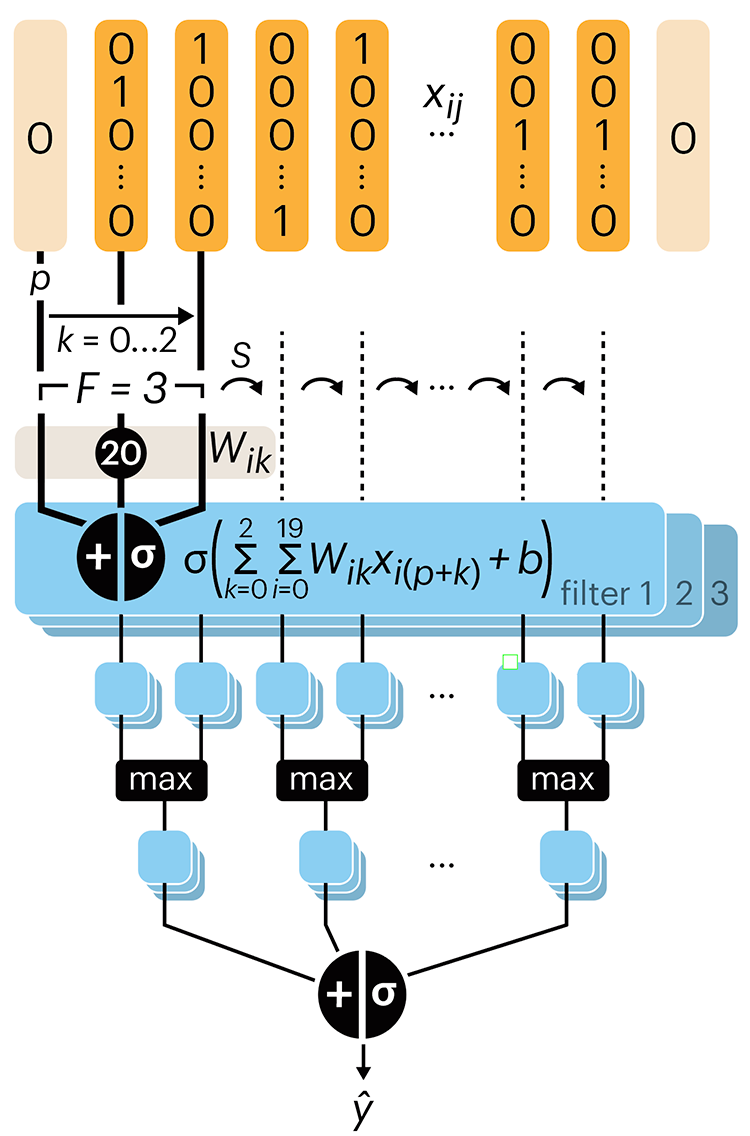
Even through convolutional networks have far fewer neurons that an FCN, they can perform substantially better for certain kinds of problems, such as sequence motif detection.
Derry, A., Krzywinski, M & Altman, N. (2023) Points of significance: Convolutional neural networks. Nature Methods 20:1269–1270.
Background reading
Derry, A., Krzywinski, M. & Altman, N. (2023) Points of significance: Neural network primer. Nature Methods 20:165–167.
Lever, J., Krzywinski, M. & Altman, N. (2016) Points of significance: Logistic regression. Nature Methods 13:541–542.



